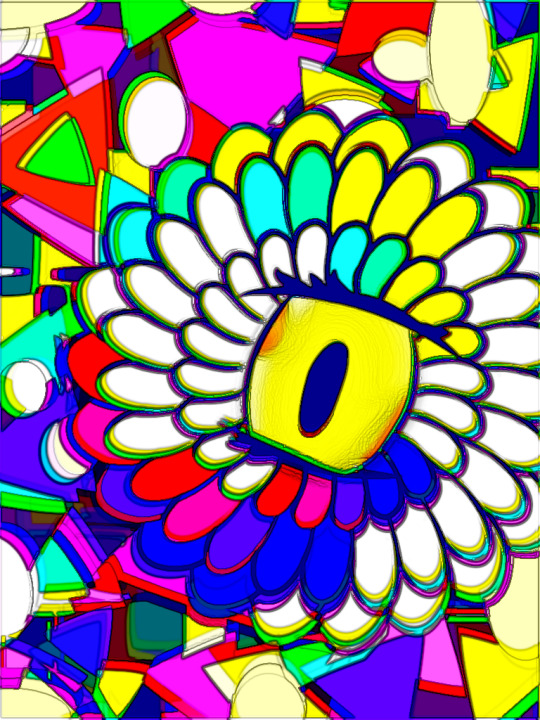#Creative Evolution
Explore tagged Tumblr posts
Text
Does our future depend on technology?
Since the Industrial Revolution, technology has established itself as a major driver of human progress, profoundly transforming our lifestyles, knowledge, and relationship to the world. From medical breakthroughs to information technologies, through automation, technology seems to guide the major directions of our future. But can we truly say that our future depends on technology? Does this mean that technology determines our destiny, as an unavoidable, even uncontrollable force? Or should we understand that, while humanity's future is shaped by technology, it still relies on other dimensions — ethical, political, spiritual — that technology cannot encompass?
Thus, we shall ask: Is technology the necessary and sufficient condition for our future, or is it merely one means among others, subordinate to more fundamental human choices?
We will first examine how technology appears to be the primary engine of human evolution and thus of our future. Then, we will show that it does not necessarily guarantee a desirable future and that it cannot by itself guide humanity. Finally, we will argue that if our future does depend on technology, it is insofar as we choose how to use it — which brings us back to our ethical and political responsibility.
I. Technology as the decisive engine of human development
Technology, understood as the set of means invented by humans to transform their environment, is one of the fundamental traits of humanity. Since prehistoric times, the use of tools has distinguished Homo habilis from its ancestors: technology appears as consubstantial to our species, as Henri Bergson points out in Creative Evolution: “Man is the being who makes tools.”
Since then, every technological advance has marked a major turning point in history: writing, printing, the steam engine, electricity, the Internet… all these inventions have radically changed our societies, our modes of production, communication, and thought. Today, innovations in artificial intelligence, biotechnology, robotics, or energy heavily shape economic models, public policies, and ecological prospects for tomorrow.
In this sense, the future seems to depend on our ability to invent new technologies, to respond with technical means to the challenges of our time: climate crisis, pandemics, aging populations, resource scarcity. From a deterministic perspective, technology appears not only as a driving force but as a condition for humanity’s survival. This is what Heidegger discusses in The Question Concerning Technology, when he asserts that modern technology is no longer merely a tool, but a “challenging” of nature — a way of extracting all its available resources. It shapes our worldview, and therefore, our future.
II. But a future governed solely by technology is dangerous and illusory
However, to consider that our future depends exclusively on technology is to forget that it does not think for itself. It is a means, not an end. It is at the service of human intentions — for better or for worse. History abounds in examples of technology being used for destructive purposes: nuclear weapons, mass surveillance, uncontrolled genetic manipulation. As Hans Jonas warns, technological progress does not necessarily imply moral progress.
Technology can therefore both serve the future and harm it, depending on how it is used. It is a power that is fundamentally ambivalent. The atomic bomb and radiation therapy both use nuclear energy, but their aims are radically different. Far from automatically ensuring a better future, technology raises fundamental ethical questions: how far should we go in manipulating life? Are we still free in a world dominated by algorithms? Who truly benefits from technological innovation?
Consequently, reducing the future to a technical dependency would be to deny humanity’s capacity to choose, to exercise free will. It would mean abandoning our future to a logic of efficiency and profitability that ignores essential values such as justice, freedom, or human dignity.
III. Our future depends on technology, insofar as we remain its masters
Rather than viewing technology as a fatality, we must acknowledge that our future depends on how we design, regulate, and direct it. Humans remain the originators of technology: it is the fruit of our inventive mind, but also of our collective choices. In this sense, our future depends on technology only insofar as we integrate it within a broader political, philosophical, and ethical vision.
Hannah Arendt, in The Human Condition, emphasizes the distinction between labor, work, and action. While technology belongs to the domain of “work” — that is, fabrication — “action” involves freedom and responsibility. It is through political action, democratic debate, education, and critical reflection that humanity can direct the use of technology toward a desirable future.
Moreover, some of the most crucial questions for our future — such as the meaning of life, social justice, the relationship to others or to nature — cannot be answered by technology. These questions concern our deepest humanity. Technology can offer solutions to problems, but it does not define what a good life is, what a just world is, or what a harmonious society looks like. These concerns belong to philosophy, culture, and ethics.
Therefore, our future does not depend on technology per se, but on our ability to inscribe it within a vision of the world that is both humane and responsible.
Conclusion
It would be unrealistic to deny that technology plays a fundamental role in shaping our future: it transforms our ways of living, addresses major challenges, and opens unprecedented possibilities. But it is not neutral, nor self-sufficient. The future cannot rely solely on a means, without reflection on the ends.
Thus, our future does depend on technology, not as a fatality, but as a choice — the choice to use it for the common good, in accordance with human values. The real question is not whether technology will shape our future, but whether we will be able to shape technology toward a truly human future.
#philosophy#technology#future#politics#spirituality#humanity#henri bergson#heidegger#Creative Evolution#The Question Concerning Technology#Hans Jonas#hannah arendt#the human condition
31 notes
·
View notes
Text
I've been writing the same story for 10, maybe 11 years now. I've plotted beats, outlined, and scrapped it all numerous times, falling into a deep depression and starting over from the fragments I chose to keep. Now, at this point, I've written and developed so much that if I showed it to the me from a decade ago, I'd have an overstimulated meltdown over how cool I think it all is. Doesn't help that I don't have many chapters actually written. I seem to have an easier time writing like I'm the guy who writes flavor text in Elden Ring for some of the greatest items like a bight of rope and actual animal dung.
That's not gonna stop me, though. I'm closer now than ever before. I'll continue to do my past self proud. I think the best part is how I'd answer a specific question. I know the younger me would ask, "are you still using the same character concepts?"












Yes. Mostly, but yes.
And to anyone curious: yes, these are Gaia Online sprites based on the 12 zodiac signs.
#oc donut steel#gaia online#character design#science fantasy#writing#writing struggles#long-term projects#writing journey#creative process#character development#zodiac-inspired#writing growth#creative evolution#writing motivation#writers on tumblr#gaia online nostalgia#zodiac characters#writing persistence#writing depression recovery#creative resilience#doing my younger self proud#Shoutout to tektek for helping my broke ass make these sprites.#feel free to ask about my characters
3 notes
·
View notes
Text
The Beastie Boys' Journey of Innovation and Influence
Share the story of the Beastie Boys' enduring legacy and their impact on music and culture. Join us in celebrating their genre-blurring music, empowering messages, and commitment to social change. Discover their inspiring journey in this must-read book
Formation of a Legacy In the heart of the tumultuous 1980s, amidst the vibrant chaos of New York City’s underground music scene, an extraordinary chapter in the annals of music history was quietly unfolding. It was a time when hip-hop’s groundbreaking spirit was simmering in the streets, and the city’s boroughs were primed to become the birthplace of legends. Little did the world know that it…

View On WordPress
#Activism#Ad-Rock#Adam Yauch#and Art#Artist Dedication#Artistic Evolution#Artistic Expression#Artistic Integrity#Awards#Beastie Boys#Collaborative Art#Creative Collaboration#Creative Evolution#Creative Inspiration#Creative Legacy#Creative Process#Cultural Commentators#Cultural Icons#Cultural Impact#Cultural Influence#Cultural Relevance#Empowering Anthems#Empowering Lyrics#Empowering Messages#Enduring Art#Enduring Legacy#Enduring Music#Evolution of Sound#Fan Art#Fan Community
0 notes
Text
The Importance of Fear & Anxiety
Marks (1987) and Bracha (2004) outline 6 ways in which fear and anxiety can afford protection.
Freezing: This response aids the vigilant assessment of the situation, helps conceal one from the predator, and sometimes inhibits an aggressive attack if you are not sure whether you have been spotted or cannot readily determine the location of the predator. Freezing may be better than lashing out or fleeing.
Fleeing: This response distances you from specific threats. When you encounter a snake, for example, running away may be the easiest and safest way to avoid receiving a poisonous bite.
Fighting: Attacking, bashing, or hitting a threatening predator may neutralize the threat by destroying it or causing it to flee. This mode of protection entails an assessment of whether the predator can be successfully vanquished or repelled. A spider can be squashed more easily than can a hungry bear.
Submission or appeasement: This response typically works mainly when the threat is a member of one’s own species. Among chimpanzees, performing submissive greetings to the alpha male usually prevents a physical attack. The same might be true for humans.
Fright: This is a response in which the person “plays dead” by becoming immobile. The adaptive advantage of becoming immobile occurs in circumstances in which fleeing or fighting will not work—for example, if the predator is too fast or too strong. Predators are sensitive to motion by potential prey and sometimes lose interest in a prey animal that remains motionless for a while (Moskowitz, 2004). If the prey is “playing dead,” the predator may loosen its grip, possibly opening up an opportunity for escape.
Faint: Fainting is losing consciousness to signal to an attacker that one is not a threat. The hypothesized function of fainting in response to the sight of blood or a sharp weapon is that it helps warfare noncombatants, such as children, to “non-verbally communicate to. . . adversaries that one was not an immediate threat and could be safely ignored” (Bracha, 2004, p. 683). Thus, fainting might have increased the noncombatant’s chances of surviving violent conflicts that were likely to be common over human evolutionary history. If this hypothesis is correct, it follows that women and children would be more likely than men to faint at the sight of blood, and the evidence strongly supports this prediction (Bracha, 2004).
Fear - “the usually unpleasant feeling that arises as a normal response to realistic danger” (Marks, 1987, p. 5).
Fears are distinguished from phobias, which are fears wildly out of proportion to the realistic danger, are typically beyond voluntary control, and lead to the avoidance of the feared situation.
Source ⚜ More: References ⚜ Functional Defenses ⚜ Writing Resources PDFs
#writing reference#writeblr#literature#writers on tumblr#evolution#dark academia#spilled ink#writing prompt#creative writing#writing inspiration#writing notes#food#character development#writing resources
881 notes
·
View notes
Text
So I was browsing Reddit, as one does, and good ol' r/SpeculativeEvolution hit me with this post by u/_Soft_Kiwi_:
Which got me to thinking of gnomes in general; in particular, though, interpretations that depict them as assistant workers within the household (e.g. hobgoblins/tomte)...:

...as well as some interpretations of house elves/gnomes that depict them as having tails with tufts on them, e.g. nisse from Netflix's Hilda and I swear I've seen older interpretations as well with tails:

Which, in the spirit of Project KARYA, of course, got me thinking, "what IRL creature could potentially serve as the basis for such a species on Karya?"
Introducing, Tarsiers:
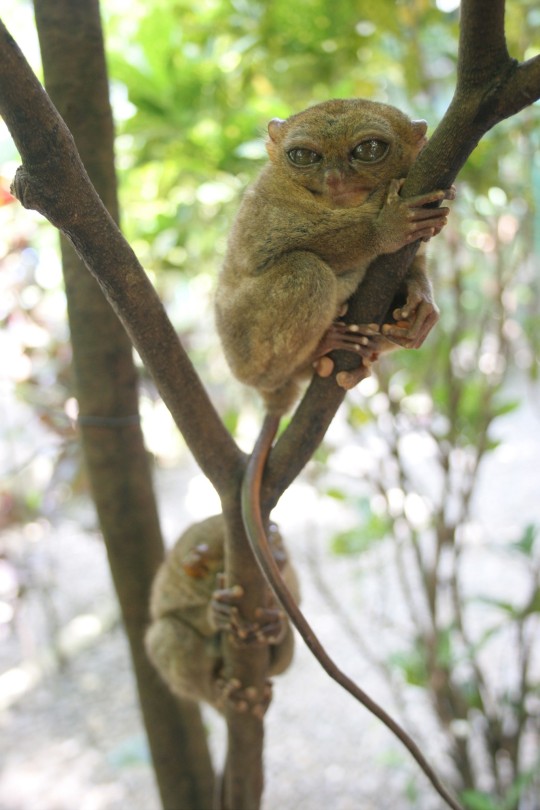
As their own branch of the primate family tree, tarsiers first appeared around 45 million years ago, and fossils of extinct species have been found in regions across Europe, Asia, and even North America. Considering this, it would be easy to make spec evo a lineage that would come to be less dependent on the trees, maybe become more bipedal and saltatorial (movement by hopping), and even have one or two species becoming comfortable with the presence of sophonts to the point of inhabiting their dwellings. They would come to serve as pest control as well as "tidying up" scraps and what would otherwise be considered garbage (either to eat for themselves or to add to nests for decoration purposes).
Will sketch a potential ancestor design and post when it's finished!
#projectkarya#scifi#creativity#fantasy#sci-fintasy#fiction#speculative biology#speculative fiction#speculative evolution#speculative zoology#worldbuilding#i just think they're neat#interesting#neat#cool cool cool#gnome#gnomes#gnome post#monkey#monkeys#primate
85 notes
·
View notes
Text
Zeb hot take? Are we good with a Zeb hot take?
I don't think he has a good sense of smell. I know it's super popular that he can track people through scent and stuff but I don't think it makes biological senseeeeeeeeeee I'm sorry. Here's the thing, his nose is tiny. It's takes up no room on his face whatsoever. His nose is the size of a house cat's and, yeah, okay, cats have a good strong sense of smell but they also weigh ten pounds. Proportionally, their nose makes sense for the size of their body and it takes up a significant portion of their face. But Zeb is seven feet tall. If he's going to have a brilliant sense of smell, his nose needs to be more proportional to his size. Look at a lion, and how big a lion's nose is compared to the rest of their face. That should be closer to Zeb's nose size if he's going to have that kind of ability.
Also his nose isn't mobile. Part of the reason dogs and cats have such good noses is because of how much they can move, but Zeb's short nose bridge doesn't move at all (and also reminds me of a pug I'm so sorry and I kind of think that breathing problems might be somewhat common for Lasat). Even human noses end in cartilage instead of bone so that we can move our noses while we smell.
A running gag through the show is that Zeb doesn't know what he smells like. The only time he acknowledges it is, I think, the disruptors episode (if I remember correctly) [EDIT: It was Siege of Lothal Pt. I. I did not remember correctly] where Zeb is hidden in a crate and carted around and coming out of the crate he makes too much noise, for which he apologizes and says 'have you smelled me?' and that was when he was in a small enclosed space.
What I'm surprised about is that people don't talk more about his sense of hearing. And his sense of sight. He's picking up radio signals and seeing shrimp colors. Or he might have incredible tactile ability. If he's from a species that can climb I feel like his fingers would be sooo sensitive to what they're touching that he can pick up on so much more than others.
Or when people are writing about him and Kallus and talking about how much he loves Kallus' scent. It's cute and all, but imagine him leaning on Kallus' chest to listen to his heartbeat instead? Or being able to hear his heartrate change? This may be slightly inspired by Superman being able to pick out the heartbeats of the people he loves out of all the humans on Earth, or the one (and only) cute thing Twilight did with Edward being so tuned into Bella's heartbeat, and Zeb has those ears and no one does anything with themmmm. I love the idea of someone with super hearing being able to pick out the heartbeat of their love interest because they love the sound of it. Or with his tactile ability, him feeling Kallus' skin heat up when he touches him? Or running his hands through Kallus' hair so he can memorize the way it feels?? There's so much potential but people focus so much on his tiny little nose.
I want you to breathe in through your nose while you move it side to side. You can feel the air come in differently. That's a decently wide range of smell, and Zeb can't do that.
#and i know write the fic you want to see in the world#i'm working on it#it's been a long time since i've done any creative writing#but you know who has a better sense of smell than zeb?#bothans and snivvians#big old noses both of 'em#and i kinda think humans too#evolution dedicated a lot of our face to our nose#people see a slightly less humanoid character and start assigning random animal traits that don't make any sense#hot take#garazeb orrelios#zeb orrelios#alexsandr kallus#kalluzeb#star wars rebels#sw rebels
124 notes
·
View notes
Text


#since the dawn of time (2012) top philosophers around the globe have been trying the answer the question#why is hibiki so damn lovable?#some have postulated that the reason not matter#simply that we must devote ourselves to paying back the joy she has brought into the world#that hibiki is more than a character from tv#and instead a median for which the purest form of happiness may manifest itself into our lives#a man-made divine intervention if you will#forged by the hands of artisans and from the minds of creatives both influenced by 300 thousand years of collective human sentience#to call her just an anime girl would not only be a rejection of human emotion and its effect on the world#but it would be an insult to evolution and life itself#senki zesshou symphogear#symphogear#symphogear xv#symphogear spoilers#hibiki tachibana#miku kohinata#anime#2010s anime#gifset#my gifs#my posts
70 notes
·
View notes
Text
four new species for rahlo's jungles!
feel free to ask questions :D
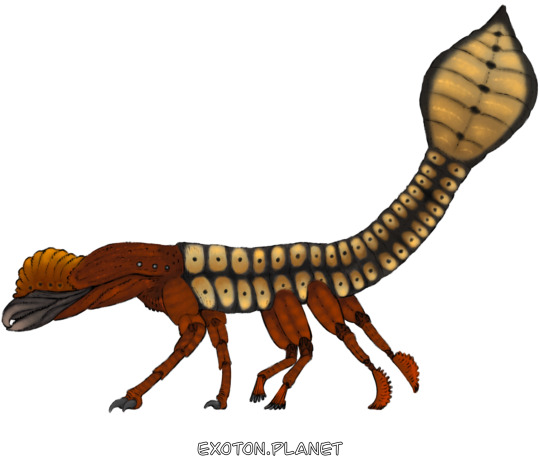
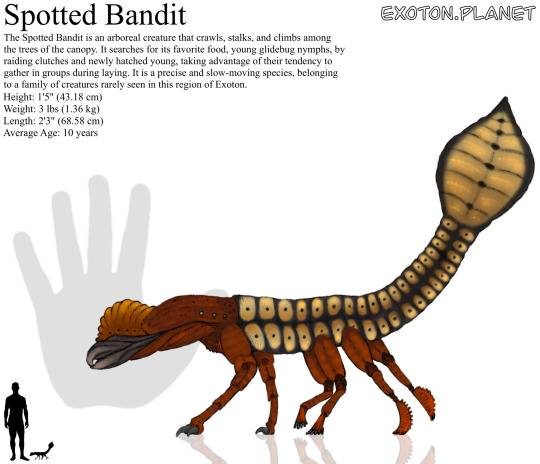



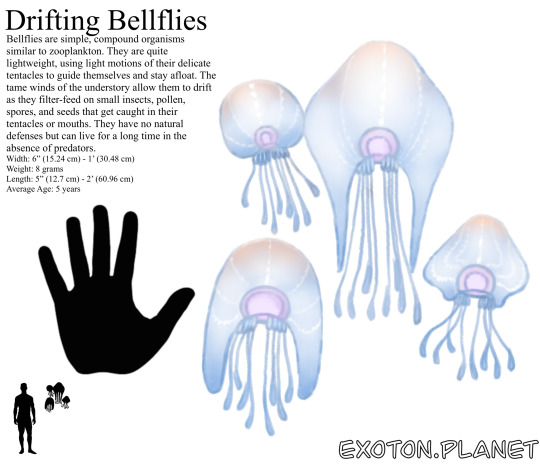
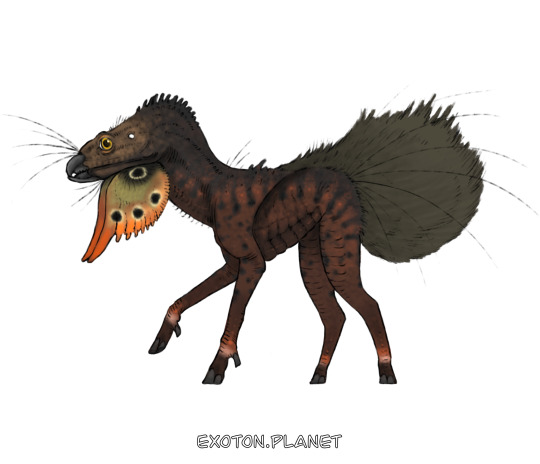
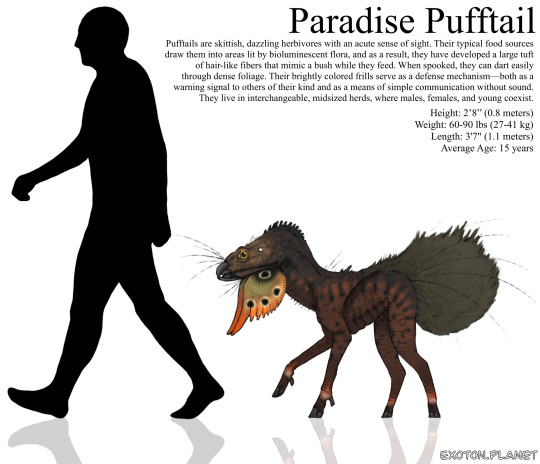
#alien species#art process#artists on tumblr#artwork#concept art#creative#design#digital art#my art#original art#digital#digital illustration#digital drawing#digital aritst#speculative anatomy#speculative ecology#spec#speculative evolution#speculative worldbuilding#speculative zoology#spec evo#speculative fiction#alien
77 notes
·
View notes
Text
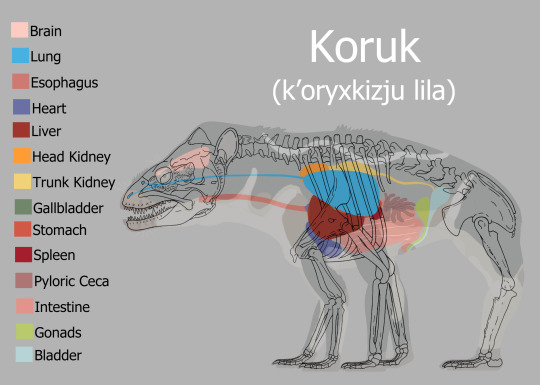
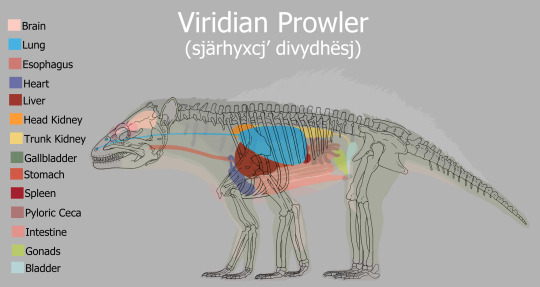

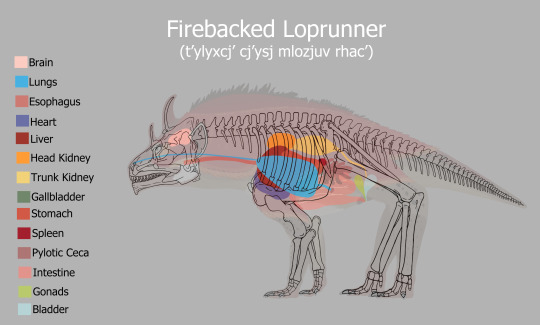
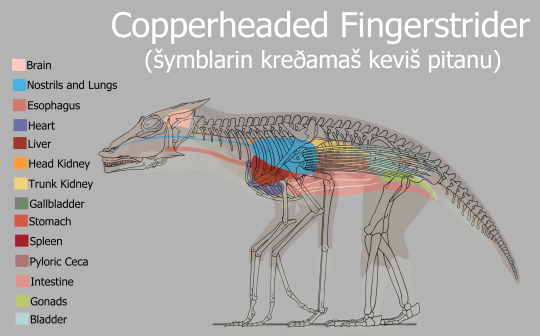
Complication of the organs and skeletons for all five of the terrestrial teleost fish lineages on Atterra!
#art#artwork#digital art#drawing#illustration#creature#creature art#creature design#monster design#monsters#creature drawing#creatures#fantasy creature#creative design#monster art#monster#fantasy world#science fantasy#fantasy art#fantasy#speculative ecology#speculative zoology#speculative biology#speculative evolution#alternate timeline#alternate universe#digital 2d#digital illustration#digital drawing#digital painting
102 notes
·
View notes
Text
2025 ART CHALLENGE where I draw the rarest Pokemon cards I pull as HUMANS! [PART 1]
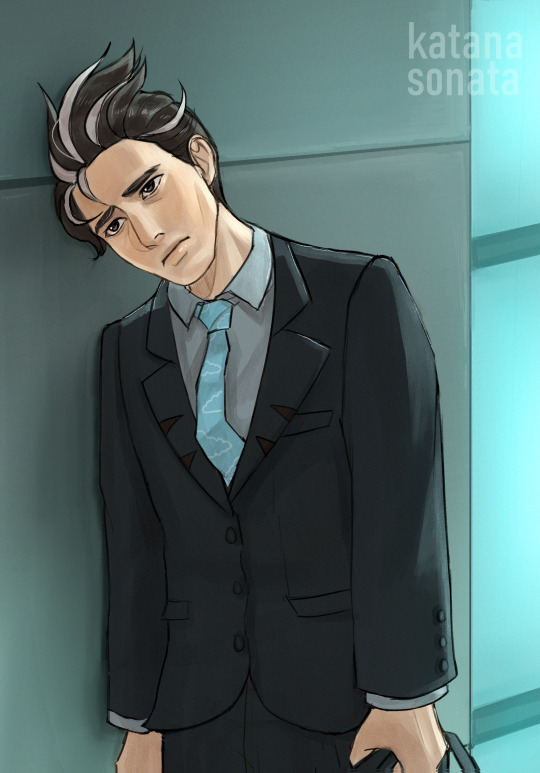


I got a box of Pokemon Terastal Festival for Christmas and decided to open one pack at a time and redraw the rarest card as a human in my style!
Today I pulled Trainer Larry (who was already a human LOL)
This year, I want to be more creative with character design. What better way than to draw Pokemon as humans? Ironically, the first pack I opened, I got a human trainer as the rarest card...RIP. Next time!
This year, I also want to draw quickly and more often. By blocking myself from opening the next booster pack of Pokemon cards until I finish a drawing, I motivate myself to finish a piece. If you want to participate in this challenge as well, feel free to tag your post #2025 PokeHuman Art Challenge
Next time, I'll get to personify a Pokemon! Looking forward to it~
#pokemon#prismatic evolutions#my art#fanart#nintendo#katanasonata#creative#art on tumblr#cartoon#larry pokemon#terastal festival#art#drawing#2025 resolutions#2025 goals#2025 art challenge#2025 PokeHuman Art Challenge#pokehuman art challenge
98 notes
·
View notes
Text
There was a species of sapient corvids. Their range was small, the coldest parts of Scandinavia and Russia. But they were certainly sapient, as smart as humans its seems.
We've known about them for a long time, but science has only found out about them recently. There have always been local legends about intelligent corvids in the far north. Some of them were said to by aids to preists of Odin in ancient times. In medieval Russia one was a folk Saint. They once harassed an army out of their territory during the winter war. Most people who saw them thought they were just a strange type of crow with a few distinct grey markings on their wings. They were capable of learning human speech, but no human voice could ever mimic their language.
They built cities in the trees, massive wooden complexes that only a creature capable of flight could achieve. Nobody really knew about them because the cold forests they lived in were so different from the places humans tend to settle. But their architecture was beautiful aa hidden as it was. And they built tools and weapons about of wood and scavenged iron that their beaks could hold. They even at times wore leather and fur. And they wrote, scratched their stories into stone and wood.
They were like humans in many ways. They had leaders, cultures, wars, gods, language. They cared for their young. They buried their dead and mourned their deaths. They even kept small sparrows as pets. Everything about them was just as human as most human cultures. They had philosophers that spoke of peace and war and the nature of reality. They had mothers who cared for their children and mourned broken eggs. They had lovers who left their times behind to be together. They had artists who sung songs on cold days to cheer up those trying to survive the winter cold.
They're gone now. We killed them all. We didn't even try to. They were just crushed in the machine of capitalism without ever really meeting our modern society. We cut down their forests for lumber and to clear them. Their biome melted away with global warming. Mass fishing made their biggest food source go away, and other sources dried up for other reasons. Their final words were not about an enemy going to war with them, but an apocalypse from the heavens, the earth itself rejecting them for reasons they would never understand. By the 1950s their cities were villages, by the 21st century the last of them were dead just as we were finding out about the other thinking species our planet has.
The last one known to live stayed with a human family. She told them stories but they never really thought of her as their equal, just a well trained bird. She died in 1988. We don't know her last words, nobody bothered to here them.
This world was meant to have two species loving side by side. Meant to have us working together. They could have gone to the stars with us. Could have become equal citizens in our future civilizations. I'm sorry we never got to live with them that way.
#196#worldbuilding#my worldbuilding#writing#my writing#short fiction#urban fantasy#flash fiction#short story#speculative biology#speculative fiction#speculative evolution#speculative zoology#short stories#enviormentalism#original story#original fiction#creative writing#writers#writer#writers on tumblr#writeblr#writers and poets#writerscommunity
37 notes
·
View notes
Text

I had a dream about a hot tub last night. 🛁
#trans#transgirl#transgirlie#trans babe#transgender#transfem#transformation#trans queen#trans woman#trans rights#transsexuality#transsexual#lgbtq community#lgbt pride#lgbtq#trans warrior#trans creatives#trans feminine#trans sexy#trans voices matter#transIcons#transExpression#trans Mental health#trans selfcare#trans survival#Equality for all#trans growth#trans evolution#trans Authencity#trans youth matter
107 notes
·
View notes
Text


I forgot my tablet at home so lunch time today became pen and paper Baby Beast Council time!!!
#turns Beast Council Forgotten Land into the muppet babies show#these kids can hold so much childhood whimsy and adventure and shenanigans#I just think it would be nice if all of them knew each other really well :’)#I think Carol would be the most feral of all them. she digs in trash cans and explores ruined buildings#she’s has a lot of style and drama in canon. I bet she would be the one that introduces everyone else to the customs of the old world#creative and curious!#i think she would kickstart everyone’s evolution of the group to be more ‘human-like’#which is what makes them leaders as adults??#I mean the humans/ancients are the ones that managed to leave this place…. they must’ve been onto something! let’s study them#don’t mind me I have a lot more of this in my head hahaha#it’ll tie into the roleswap too. we’re gonna have fun#kirby series#beast pack#kirby and the forgotten land#art#clawroline#leongar#sillydillo#Gorimondo#Fleurina
98 notes
·
View notes
Text
Milestones in Human Evolutionary History
TIME — EVENT
15 billion years ago (bya) — The Big Bang (origin of universe)
4.7 bya — Earth forms
3.7 bya — First life emerges
1.2 bya — Sexual reproduction evolves
500–450 million years ago (mya) — First vertebrates
365 mya — Fish evolve lungs and walk on land
248–208 mya — First small mammals and dinosaurs evolve
208–65 mya — Large dinosaurs flourish
114 mya — Placental mammals evolve
85 mya — First primates evolve
65 mya — Dinosaurs go extinct; mammals then increase in size and diversity
35 mya — First apes evolve
6–8 mya — Common ancestor of humans and African apes evolves
4.4 mya — First primate with bipedal locomotion (Ardipithecus ramidus)
3.0 mya — The australopithecines evolve in savannas of Africa
2.5 mya — Earliest stone tools develop—Oldowan (found in Ethiopia and Kenya, Africa); used to butcher carcasses for meat and to extract marrow from bones; linked with Homo habilis
1.8 mya — Hominids (Homo erectus) spread beyond Africa to Asia—first major migration
1.6 mya — Fire evidence; likely hearths; linked with African Homo erectus
1.5 mya — Invention of Acheulean hand axe; linked with Homo ergaster (tall stature, long limbs)
1.2 mya — Brain expansion in Homo line begins
1.0 mya — Hominids spread to Europe
800 thousand years ago (kya) — Crude stone tool kit used—found in Spain, linked with Homo antecessor
600–400 kya — Long, crafted wooden spears made and used; linked with Homo heidelbergensis found in Germany
500–100 kya — Period of most rapid brain expansion in Homo line
200–30 kya — Neanderthals flourish in Europe and western Asia
150–120 kya — Common ancestor for all modern humans (Africa) evolves
100–50 kya — Exodus from Africa—second major migration [“Out of Africa”]
50–35 kya — Explosion of diverse stone tools, bone tools, blade tools, well-designed fireplaces, elaborate art; found mainly among Homo sapiens, rarely among Neanderthals
40–35 kya — Homo sapiens (Cro-Magnons) arrive in Europe
30 kya — Neanderthals go extinct
27 kya–present — Homo sapiens colonize entire planet; all other hominid species are now extinct
Note: These dates are based in part on information from a variety of sources, including Johanson and Edgar (1996), Klein (2000), Lewin (1993), Tattersall (2000), Wrangham, Jones, Laden, Pilbeam, and Conklin-Brittain (1999), Galway-Witham, Cole, and Stringer (2019), and the references contained therein.
Source ⚜ More: Writing Notes & References
#evolution#writing reference#writeblr#worldbuilding#literature#writers on tumblr#dark academia#spilled ink#writing prompt#creative writing#writing notes#history#writing resources
174 notes
·
View notes
Text
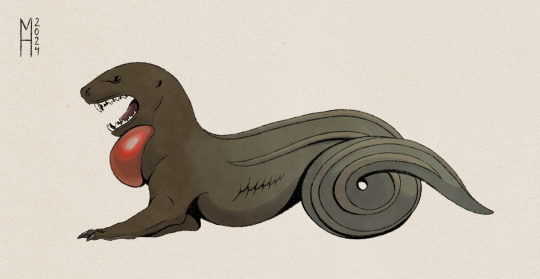
Giluk. Specializes in pursuing prey in-between roots, rocks and other cavities.
Good reminder that the various creatures of this worldbuilding don't belong to any Earth taxon, as the world is not Earth. Despite possible similarities there are no mammals, reptiles, etc.
#something something convergent evolution#but also I like to not go full alien#but also also I'm not very creative and just happen to like basic ass animals#original species#creature design#fantasy species#fantasy animal#fauna#worldbuilding
269 notes
·
View notes
